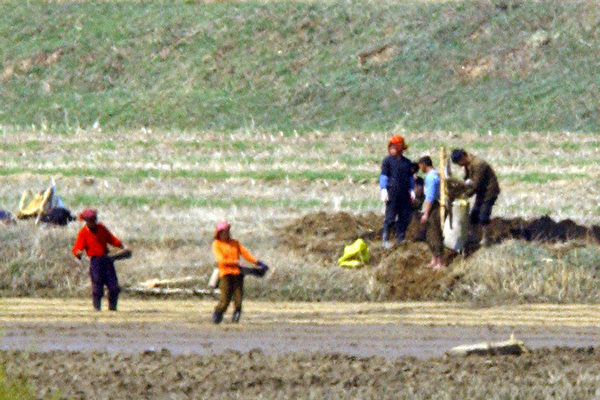In North Korea, potato harvest, also known as soybean harvest, ended at the end of March. However, now men, women, young, and old are in the fields using hoes to dig the soil, trying to find potatoes that were either left behind or discarded due to being spoiled. This scene highlights the food shortage issue in North Korea, with the country’s government consistently covering up signs of famine by attributing deaths from starvation to illnesses.
According to reports from Radio Free Asia, a resident in the Ryanggang Province of North Korea, who is connected with the agricultural sector, stated that the sight of people scavenging in local fields indicates the hunger issue that occurs annually at this time. This is because the food allocated by the government at the end of the year has been consumed, and the next scheduled distribution has not yet arrived.
The resident revealed that after the harvest of crops in autumn last year, the Ryanggang Province government provided 200 kilograms of potatoes to each farmer and 100 kilograms to each farmer’s dependents.
He mentioned that the government promised to provide rice and corn in the second round of distribution but has not done so yet.
North Korean citizens receive regular food rations from the government, but these rations are not enough to sustain life. Therefore, they must also purchase additional food from markets or seek other sources of food.
Despite a better crop yield last year compared to previous years, North Korean citizens still lack food. The agricultural output in North Korea remains significantly lower than the annual food requirements estimated by the Food and Agriculture Organization of the United Nations.
Hence, another resident in the Ryanggang Province stated that the annual period of famine in North Korea arrives on time every year, and as in previous years, scavengers flock to potato fields to collect edible items.
He mentioned, “Frozen potatoes can be ground into flour after drying to make noodles or potato cakes. Farmers in rural areas of Ryanggang Province have recently been unable to work because they have nothing to eat.”
He described the current situation as very grim. The North Korean government attempts to conceal the number of starvation deaths by claiming that those individuals died from illnesses.
He added, “Clinics and neighborhood monitoring units state that they died from diseases, but in fact, everyone who recently died from diseases starved to death because they had nothing to eat.”
Jiro Ishimaru, the CEO of Asia Press, informed Radio Free Asia that the number of deaths from starvation in North Korea usually increases around March.
Ishimaru mentioned, “Fear is quickly spreading among North Korean residents, especially among those vulnerable to harm. Therefore, if things continue to develop in this way, people will starve to death as they did last year.”
He noted that even though there was an increase in crop yields in North Korea’s northern region last year, the food distributed to farmers did not show much difference. Grains are primarily allocated to the military, leaving little for the general population.
A resident in the Pyongyang Province of North Korea mentioned that farmers who are unable to work due to hunger in the area can receive food rations first, but these rations will be deducted from the annual quota.
Authorities have instructed neighborhood monitoring units, local officials, and factories to collect rice and corn so that an adequate supply of food can be provided to farmers in need.

